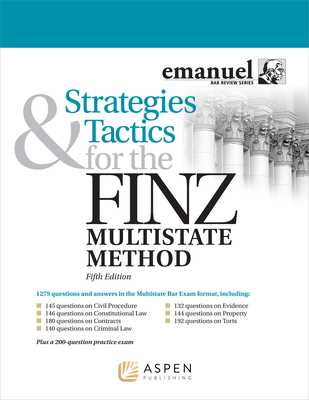
Approaching a written test in the field of governance and rights requires a clear strategy. Success depends on your ability to structure your thoughts, apply critical analysis, and present your understanding with clarity. Familiarity with key principles and landmark rulings is essential, but how you convey that knowledge plays a crucial role in achieving high marks.
Effective preparation involves understanding the core concepts, as well as practicing the application of theory to complex scenarios. This includes recognizing the most important elements that will be assessed and how to integrate them seamlessly into your responses. A logical, well-reasoned approach is far more impactful than simply memorizing details.
In this guide, we will explore strategies to improve your performance, focusing on techniques to organize your ideas and maximize your time during the assessment. Whether you are faced with multiple-choice, short-answer, or essay tasks, mastering these skills will help you present your knowledge in the most effective way possible.
Approaching Legal Challenges in Written Assessments
When faced with written assessments that test your understanding of governmental principles and individual rights, the key to success lies in structuring your responses logically and persuasively. The task involves not only recalling relevant information but also analyzing complex scenarios and applying appropriate concepts in a coherent manner. Crafting well-organized responses that demonstrate a deep understanding of the material will help you stand out in the evaluation process.
Start by breaking down the prompt to identify the main issues being tested. Focus on the core elements and principles that are relevant to the scenario. Instead of simply listing information, your goal is to present a structured argument that reflects a critical evaluation of the topic. Use examples from case studies, precedents, and legal interpretations to back up your points and strengthen your argument.
Time management plays a crucial role in delivering a comprehensive response. Allocate sufficient time to plan your approach, organize your thoughts, and revise if necessary. Make sure to stay focused on the key concepts while avoiding unnecessary details that may distract from the main points of your response.
Understand the Key Constitutional Concepts
To perform well in assessments testing governance and individual rights, it’s crucial to grasp the fundamental principles that underpin the entire subject. This includes understanding the framework that defines the relationship between the state and its citizens, as well as how certain rights and freedoms are protected or limited by the system. Mastering these concepts will not only help you answer questions more effectively but also allow you to engage with complex legal problems more critically.
Identify Core Principles
Focus on the foundational principles that form the backbone of the system, such as the separation of powers, the balance of federal and state authority, and the protection of civil liberties. These principles will often guide your analysis of specific cases or scenarios. Recognizing their role in shaping the interpretation of rules will help you construct more persuasive and well-rounded arguments.
Understand Key Legal Precedents
In addition to theoretical principles, it’s essential to be familiar with landmark decisions that have shaped the interpretation of governance and individual rights. Case law provides context for how these concepts have been applied in real-life situations. Understanding key precedents allows you to make informed connections and draw relevant conclusions when faced with new scenarios.
Review Case Law and Precedents
In any written assessment related to governance and rights, understanding how past decisions have shaped the current framework is essential. Case law and precedents offer a practical guide to interpreting principles and applying them to real-world situations. These judicial decisions serve as a foundation for reasoning and argumentation, providing examples of how complex issues have been addressed in the past.
Case law often highlights key moments in history where courts have defined the scope of rights, responsibilities, and the balance of power. Familiarity with these decisions allows you to support your arguments with well-established examples, demonstrating not only your knowledge but also your ability to apply it effectively. By reviewing these precedents, you gain insight into judicial reasoning, which is invaluable when analyzing hypothetical scenarios or interpreting difficult questions.
Additionally, understanding the evolution of these rulings and their impact on current legal interpretations will help you make connections between theory and practice. This enables you to answer with greater depth, showing your grasp of both the legal principles and their real-world applications.
Develop a Strong Legal Framework
Creating a solid structure for your responses is essential when tackling any complex topic in written assessments. By establishing a clear legal framework, you ensure that your argument is both coherent and compelling. A well-constructed framework helps organize your thoughts and makes it easier to address key points logically, providing a strong foundation for your analysis.
Key Components of a Strong Framework
- Identification of Issues: Begin by recognizing the central points that need to be addressed. This step helps you stay focused on the core aspects of the topic.
- Relevant Principles: Ensure that you are applying the appropriate theories and concepts that relate to the situation at hand. Incorporate both broad principles and specific rules where necessary.
- Application to Facts: Illustrate how the identified principles apply to the facts or scenarios presented in the question. This is where you can showcase your critical thinking skills.
- Conclude with Reasoned Judgment: After analyzing the issues, provide a conclusion that logically follows from your discussion. Make sure your final statement ties back to the initial problem.
Building Your Approach
A strong framework is not only about identifying concepts but also about presenting them in a way that is easy to follow. Organize your arguments in a step-by-step manner, using headings or bullet points to break down your reasoning. This structure will help the examiner follow your thought process and see the logic behind your conclusions.
Practice Analyzing Hypothetical Scenarios
One of the most effective ways to prepare for assessments is by practicing the analysis of hypothetical situations. These scenarios often simulate real-life challenges and test your ability to apply theoretical knowledge to practical problems. By regularly engaging with such exercises, you develop the skills necessary to break down complex issues and craft clear, reasoned responses.
When approaching hypothetical situations, it is essential to identify the key facts, the relevant principles at play, and how they interact with one another. This requires not only understanding the material but also the ability to recognize patterns and apply precedents. The more you practice, the better you will become at spotting important details and making connections between concepts.
In addition to understanding the facts and principles, it is crucial to anticipate potential counterarguments and opposing views. This helps in creating a balanced analysis and strengthens your response. As you work through different scenarios, aim to develop a structured approach that includes outlining the issues, applying appropriate concepts, and drawing well-supported conclusions.
Structure Your Answers Clearly and Concisely
When presenting your thoughts in written assessments, clarity and precision are essential. A well-structured response not only improves the readability of your arguments but also ensures that your points are effectively communicated. Organizing your response logically helps the reader follow your reasoning and demonstrates your ability to analyze and synthesize complex ideas.
Start by introducing the key issue or topic, briefly outlining the relevant principles that will guide your analysis. Next, proceed with the body of your response, breaking down each point clearly and systematically. Use paragraphs to separate different stages of your argument, ensuring each one focuses on a single idea. This structure makes it easier for the reader to digest and follow your analysis.
Finally, conclude with a summary of your findings or a well-reasoned judgment. Avoid unnecessary details or tangents that could detract from the central points. A concise and focused response not only helps in effectively conveying your argument but also demonstrates your ability to prioritize important information and stay on track.
Focus on Relevant Legal Principles

When addressing complex issues in assessments, it is essential to focus on the principles that directly pertain to the scenario at hand. Rather than attempting to cover every aspect of the subject, concentrate on the core concepts that will guide your analysis. This approach ensures that your response is not only focused but also demonstrates a clear understanding of the most important legal frameworks.
Key Principles to Consider
- Individual Rights: Consider how personal freedoms are protected and how they relate to governmental powers.
- Government Structure: Understand the division of authority between different branches and levels of government.
- Judicial Interpretation: Pay attention to how courts interpret and apply key provisions, shaping the understanding of rights and responsibilities.
- Balancing Interests: Evaluate how competing interests–such as individual rights versus public safety–are balanced in decision-making.
Application of Principles
Once you’ve identified the relevant principles, it’s important to apply them directly to the facts or issues presented. By doing so, you demonstrate a deeper level of analysis and critical thinking. Focus on how these principles can guide your conclusions and help address the challenges raised in the scenario. This targeted approach will allow you to build a stronger and more persuasive argument in your response.
Balance Argumentation and Counterarguments
A well-rounded response requires not only presenting your position clearly but also acknowledging and addressing opposing views. Balancing your argumentation with counterarguments shows that you have considered all sides of the issue, leading to a more thorough and nuanced analysis. This approach demonstrates critical thinking and strengthens the credibility of your response.
Building a Strong Argument
Start by establishing a clear and logical argument based on relevant principles and precedents. Support your position with strong evidence, reasoning, and examples to build a solid foundation. Ensure that your argument flows logically and connects each point effectively, making it easy for the reader to follow your thought process.
Addressing Counterarguments
After presenting your main argument, introduce possible counterarguments or alternative perspectives. Acknowledge the validity of these viewpoints, but explain why they may not fully address the issue or why they might not apply in this particular case. Offering a well-reasoned rebuttal shows your depth of understanding and allows you to strengthen your original position.
Manage Time Effectively During the Exam
Effective time management is crucial when tackling a written assessment. It ensures that you allocate enough time to cover all topics thoroughly without rushing through any of them. By prioritizing tasks and keeping track of time, you can avoid last-minute stress and provide well-structured, thoughtful responses for each section.
Steps to Manage Your Time
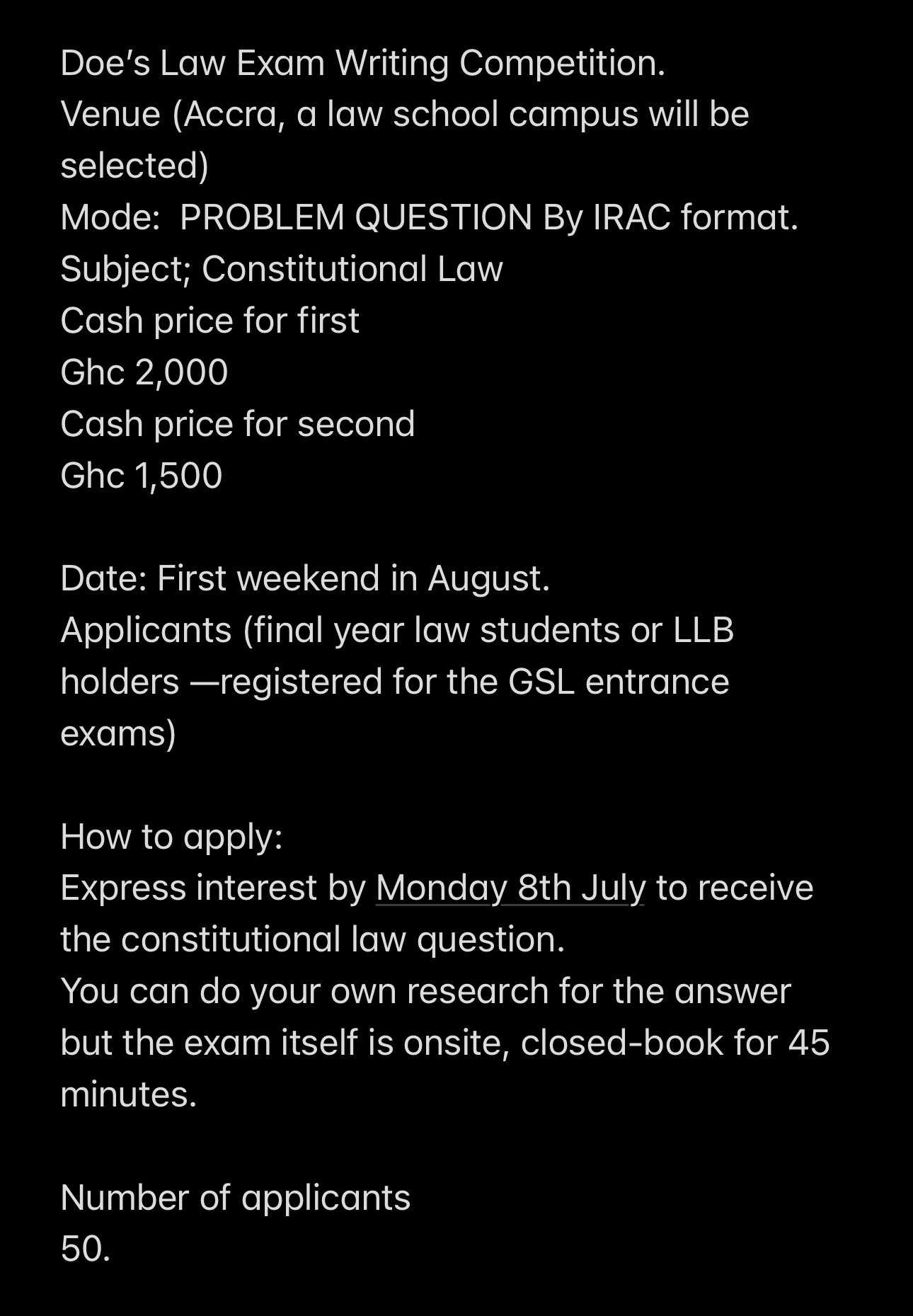
Start by reading through the entire set of tasks to understand the scope of the assessment. Allocate time for each section based on its complexity and the marks it carries. By doing so, you can ensure that you spend an appropriate amount of time on each area without over-investing in one part and neglecting another.
Time Allocation Strategy
| Task Type | Suggested Time Allocation |
|---|---|
| Introduction | 5-10 minutes |
| Main Body (Each Section) | 30-40 minutes |
| Conclusion | 5-10 minutes |
| Review and Edits | 10-15 minutes |
Keep an eye on the clock throughout the assessment, but don’t be overly fixated on it. Focus on making each response clear and concise while ensuring you have enough time to review your work before submission. If you find yourself spending too much time on one section, move on to the next and come back to it later if necessary. This way, you can ensure that all parts of your response are completed thoughtfully and accurately.
Use Legal Terminology Correctly
In any written assessment, the proper use of specialized terminology plays a vital role in communicating your understanding of the subject. Using the correct terms not only demonstrates your knowledge but also ensures that your response is clear and precise. However, it is important to use these terms accurately and in the right context, as misusing legal vocabulary can confuse your argument and weaken your position.
Master Key Terms
Before attempting to incorporate legal terminology into your response, make sure you are familiar with the most important terms related to the subject. Understanding their meanings and nuances will allow you to use them effectively and with confidence. Common terms may include concepts such as “jurisdiction,” “precedent,” or “separation of powers,” but be sure to tailor your vocabulary to the specific issue being discussed.
Avoid Overuse and Ambiguity
While it’s important to use accurate terminology, avoid overloading your response with jargon that might obscure the clarity of your points. Select terms that add value to your argument and enhance the precision of your explanation. Furthermore, always aim to use terms with their correct legal meaning and context, as ambiguous or inappropriate use can detract from the quality of your response.
Identify and Address Key Issues
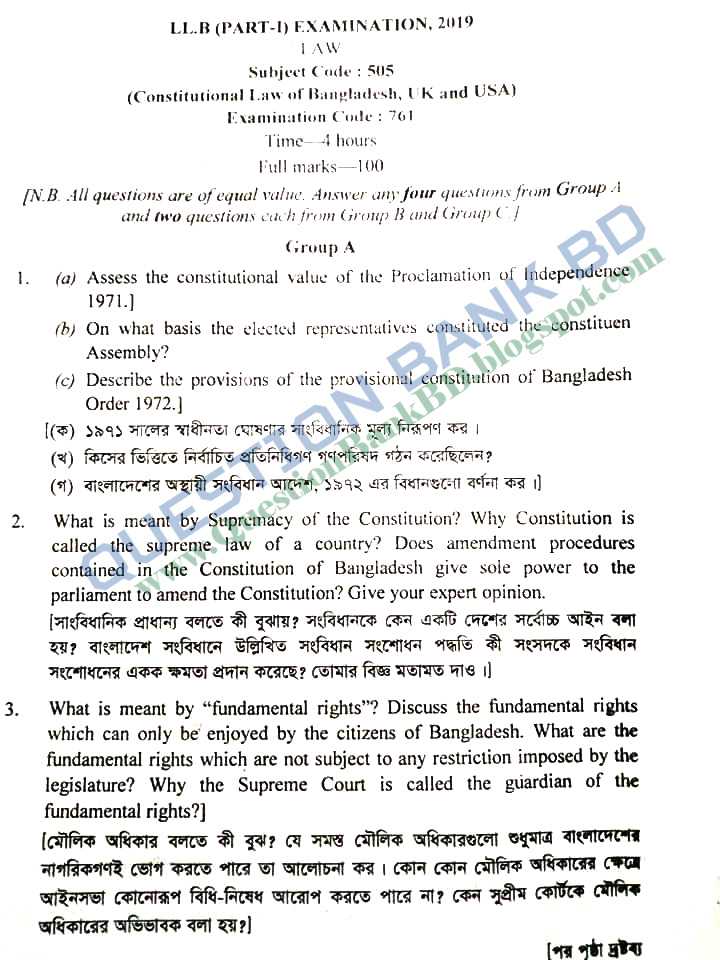
To provide a well-structured and thorough response, it is essential to pinpoint the central issues presented in the task. Once you have identified these key aspects, you can address them systematically, ensuring that your argument is focused and relevant. A careful examination of the facts and context will help you uncover the most significant points to discuss, leading to a more comprehensive and compelling analysis.
Start by breaking down the scenario or problem into its core components. Look for the underlying legal principles or conflicts that need to be resolved. Pay attention to any ambiguities or points of contention that require further clarification or interpretation. By isolating these critical issues, you can then structure your response to address each one in turn, demonstrating a clear understanding of the complexities involved.
As you address each issue, remember to support your reasoning with relevant examples, precedents, or principles. This will help to reinforce the strength of your argument and show that you are considering all aspects of the matter at hand. By thoroughly engaging with the key issues, your response will be both comprehensive and well-supported.
Apply Constitutional Law to Real-Life Situations
Being able to relate theoretical principles to practical scenarios is a crucial skill when tackling complex legal topics. Understanding how fundamental principles influence real-world cases allows you to demonstrate a deeper understanding and to apply theoretical knowledge effectively. By considering actual situations and analyzing them through the lens of established principles, you can craft well-reasoned responses that reflect both knowledge and practical insight.
Understand the Context of Each Scenario
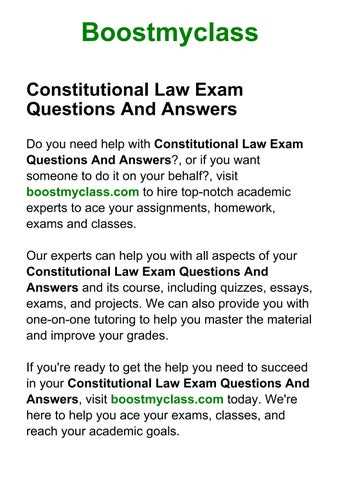
Every real-life situation is shaped by its unique context, and understanding these specifics is key to applying relevant principles. Take the time to assess the facts thoroughly, considering any nuances or distinctive elements that might affect the application of general rules. Whether you’re dealing with governmental actions, individual rights, or institutional powers, understanding the broader context will allow you to assess the case with precision.
Link Theory to Practice
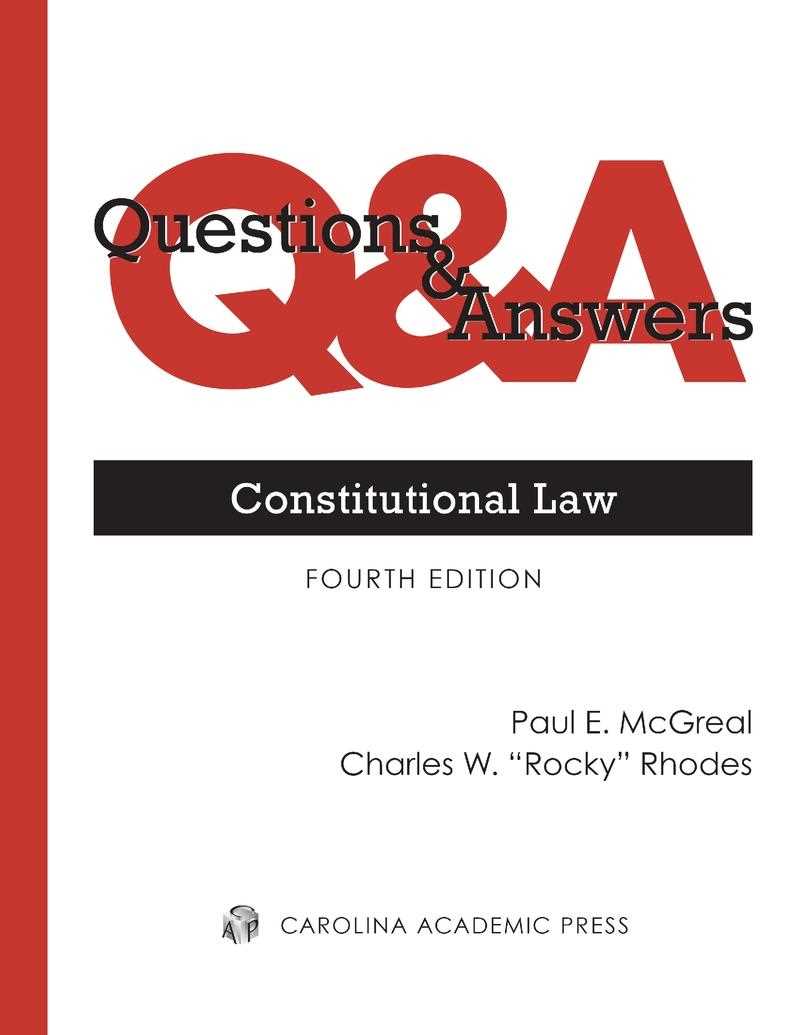
Once the context is understood, apply the theoretical concepts to the situation at hand. Identify how the key principles relate to the facts and how they might resolve any issues or conflicts presented. Make sure to reference precedents or previous rulings that have addressed similar issues, as this will help to ground your analysis in existing frameworks. By making these connections clearly, you show not only that you understand the material but also that you know how to apply it effectively in practice.
Highlight Major Constitutional Amendments
Key amendments to any nation’s foundational document play a pivotal role in shaping the interpretation of rights and governance. These changes often address critical societal issues and reflect evolving values within the society. Understanding these significant amendments is essential for analyzing how the document adapts to modern challenges and the legal principles it enshrines.
Focusing on major changes provides insight into the transformation of rights, governance, and individual freedoms. Highlighting these amendments can also help clarify how they impact the legal landscape and influence ongoing debates. Here are some notable examples:
- The Bill of Rights: A collection of ten amendments that serve to protect individual freedoms such as freedom of speech, religion, and the right to a fair trial.
- Thirteenth Amendment: Abolished slavery, a landmark change that fundamentally altered the social and legal structure of the nation.
- Fourteenth Amendment: Ensures equal protection under the law and addresses issues of citizenship and due process.
- Fifteenth Amendment: Granted voting rights regardless of race, color, or previous condition of servitude, a crucial step towards equality.
- Twenty-Sixth Amendment: Lowered the voting age to 18, expanding suffrage and increasing political participation.
Each of these amendments serves as a foundational element in the understanding of how fundamental rights have evolved. In an academic or practical context, identifying and discussing these key changes is crucial to understanding the dynamics of governance and the protection of rights within the societal framework.
Explain Judicial Review and Its Impact
Judicial review is a fundamental concept in any legal system, providing the judiciary with the power to examine and potentially invalidate actions by the executive or legislative branches that are deemed unconstitutional. This practice ensures that governmental actions comply with the core principles enshrined in the nation’s foundational document. It serves as a check and balance, preventing any branch of government from exceeding its authority or infringing upon individual rights.
Role in Upholding Rights
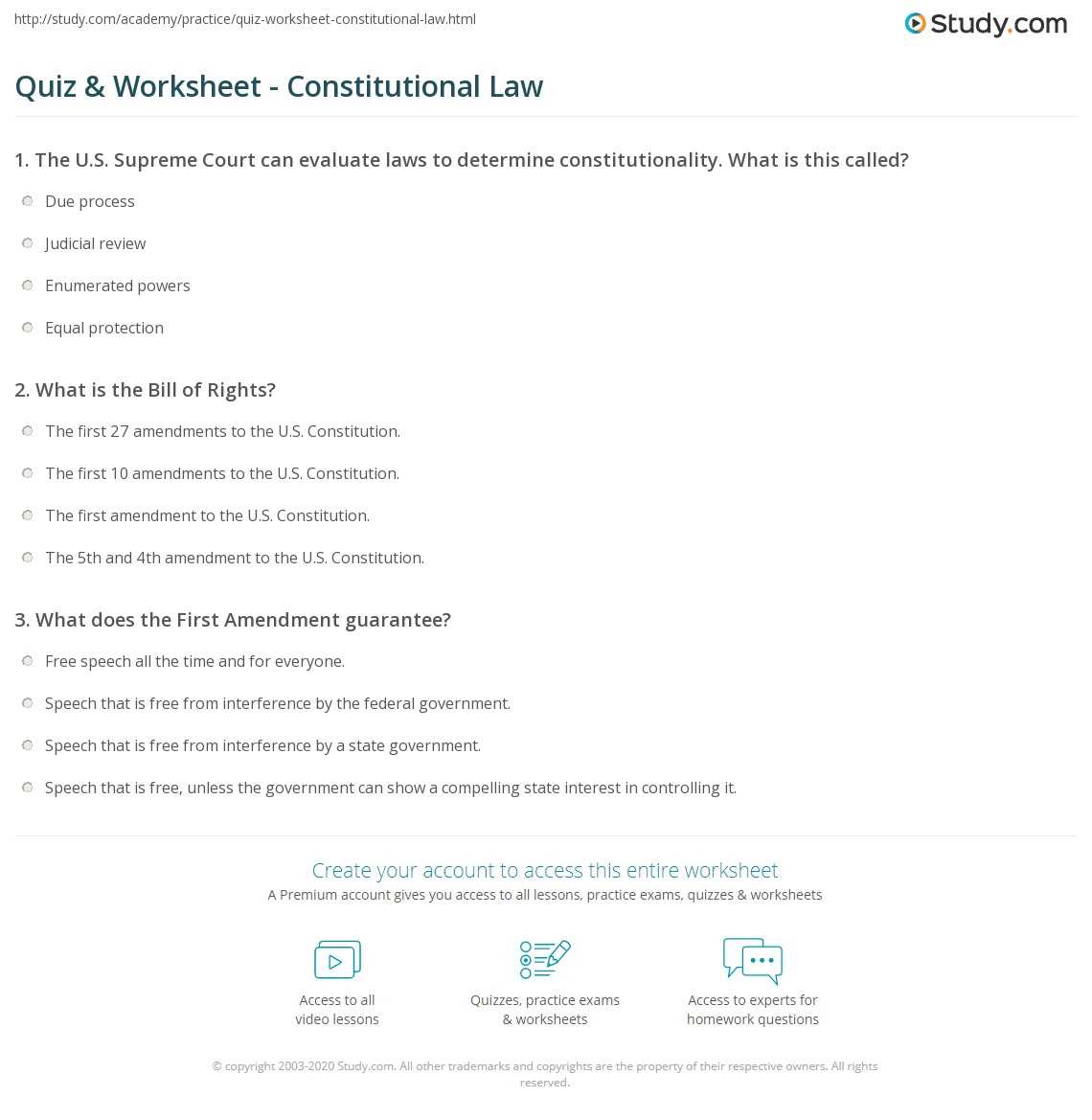
The judiciary’s ability to review decisions and laws plays a critical role in safeguarding the rights of individuals. By evaluating whether actions by the state or government agencies align with established protections, judicial review ensures that no law or policy can infringe upon fundamental freedoms. For example, if a law violates personal rights such as freedom of expression or protection from discrimination, judicial review provides the mechanism to challenge and correct such injustices.
Impact on Governance
Judicial review also has profound implications for the relationship between the branches of government. It reinforces the concept of the separation of powers by allowing the judiciary to limit the authority of the legislative and executive branches when necessary. This prevents any one branch from becoming too powerful, maintaining a balance that is vital to a healthy democracy. The decisions made through judicial review set precedents that shape future legal interpretations, thereby influencing both policy and governance long after the case has been decided.
Avoid Common Pitfalls in Exam Writing
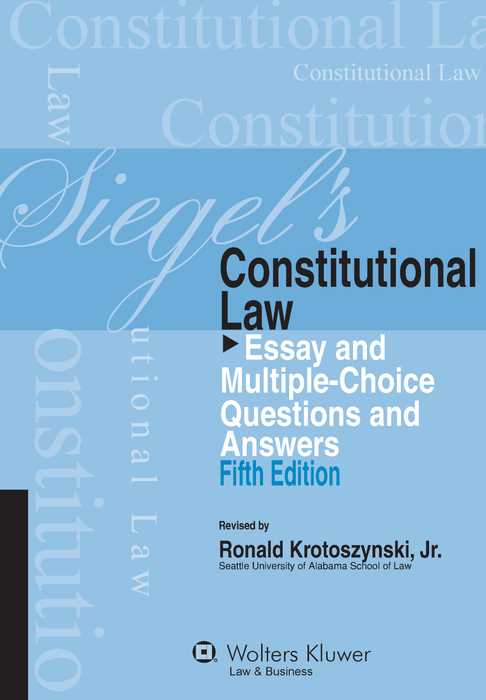
When composing responses during assessments, it’s crucial to avoid several common errors that can hinder clarity and precision. While it’s natural to feel pressure in a timed environment, certain missteps can derail an otherwise strong answer. Focusing on structure, accuracy, and relevance is key to delivering a well-rounded and compelling response.
One of the most frequent mistakes is failing to directly address the main issue presented in the prompt. It’s easy to become sidetracked by irrelevant details or excessive explanations of secondary topics. Instead, maintain focus on the core issues and make sure each point you make ties back to the central question.
Overloading with Unnecessary Information
Another pitfall is overloading your response with superfluous information. While it may seem beneficial to provide as much detail as possible, too much information can overwhelm your answer and obscure your main argument. Prioritize key points, and avoid drifting into tangential discussions. Precision in language and argumentation is far more effective than length or complexity.
Ignoring the Importance of Clarity
Clarity is paramount when formulating your ideas. Unclear writing or convoluted sentences can confuse the reader and diminish the effectiveness of your response. It’s important to present your analysis in a straightforward, logical manner. Using clear transitions between ideas, defining key terms, and breaking down complex points into manageable parts will strengthen your writing.
Use Examples to Strengthen Your Argument
Illustrating your points with well-chosen examples is a powerful way to reinforce your argument. Examples provide concrete evidence for your claims and demonstrate a deeper understanding of the subject matter. By grounding your analysis in real-world situations, you make your reasoning more persuasive and accessible.
When presenting examples, make sure they are relevant and directly support your central argument. Generic or unrelated examples can weaken your response, while specific instances can highlight the nuances of your analysis. The goal is not simply to list cases or scenarios but to use them to clearly connect abstract principles to practical outcomes.
Examples in Historical Context
One effective approach is to draw on historical events or landmark decisions. These examples help illustrate how certain principles have been applied over time and can show patterns or shifts in interpretation. For instance, citing well-known judicial decisions or legislative actions can lend weight to your analysis by showcasing how similar issues were handled in the past.
Modern Examples and Case Studies
Modern examples, such as recent court rulings or ongoing political debates, can also be valuable. These bring a current perspective to your argument, demonstrating that the principles you’re discussing remain relevant in today’s world. Moreover, they can help bridge theoretical discussions with tangible real-world consequences.
| Example | Relevance |
|---|---|
| Supreme Court decision in Brown v. Board of Education | Illustrates the application of equal protection principles to racial segregation in schools |
| Recent legal reforms on privacy rights | Shows the modern relevance of individual rights in the digital age |
Prepare for Multiple-Choice and Essay Questions
When preparing for different types of assessments, it is crucial to develop strategies that cater to the specific format of each. While multiple-choice questions often test your ability to recall and apply concepts quickly, essay prompts require deeper analysis and clear, structured responses. Understanding the demands of both formats is essential for performing well.
Strategies for Multiple-Choice Questions
Multiple-choice questions generally focus on testing knowledge of fundamental principles and their application. To excel in this section:
- Review Key Concepts: Focus on core ideas and definitions that are central to the subject. Make sure you understand both the broad themes and the specifics.
- Practice with Past Papers: Familiarize yourself with the format and the types of questions asked. This helps you identify recurring patterns and important topics.
- Eliminate Clearly Incorrect Answers: In many cases, even if you are unsure, you can increase your chances by ruling out one or two obviously incorrect options.
Approach for Essay Prompts
Essay questions test your ability to organize your thoughts, argue your point, and use relevant examples effectively. For these:
- Plan Your Answer: Before you begin writing, take a few minutes to outline your main arguments. This ensures your essay has a logical structure.
- Be Concise and Focused: Stay on topic and avoid including irrelevant information. Your argument should be clear and directly address the prompt.
- Support Your Claims: Use specific examples and case studies to strengthen your argument. Referencing real-world applications adds credibility to your analysis.